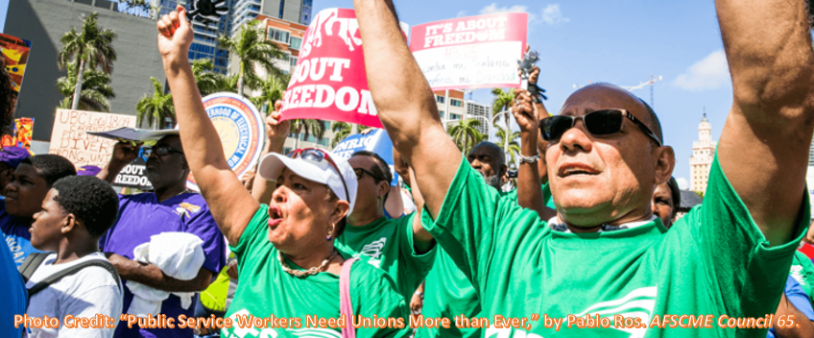Gopher State Bucks Regional and National Trends by Increasing Unionization Rate
Chicago: A trio of new research studies shows that more people are joining unions in Minnesota and that wages in the Gopher State are growing faster than the neighboring states of Illinois and Wisconsin, as well as in the rest of the United States.
Produced by the Midwest Economic Policy Institute with researchers from the University of Illinois at Urbana-Champaign, University of Minnesota, University of Wisconsin-Madison, and University of California-Irvine, the annual State of the Unions Research series profiles unionization rates and hourly wages in Minnesota, Illinois, and Wisconsin.
Based on data from the U.S. Department of Labor and U.S. Census Bureau, the studies offer a comparative window into the economic effects of different state-level approaches to labor and economic policy.
“While the rise of right-to-work laws and other national economic trends are no doubt impacting unionization and wage growth, differences in state-level policymaking can either accelerate or blunt these broader trends,” said Midwest Economic Policy Institute Policy Director Frank Manzo IV. “The data shows that Wisconsin’s model has produced lower wages and slower wage growth, while Minnesota’s has had the opposite effect.”


The reports highlight economic data over the last decade, at a time when Wisconsin opted for more austerity and weakened labor standards— specifically placing limits on collective bargaining (Act 10), repealing prevailing wage, and enacting a so-called “right-to-work” law.
Despite a budget crisis and efforts by its Governor to pursue an agenda similar to Wisconsin’s, the authors note that Illinois has largely maintained a status quo, augmented by the City of Chicago’s decision to raise its minimum wage.
Of the three states studied, Minnesota posted the highest wages, fastest wage growth, and actually increased its number of union members. Researchers note that the Gopher State has increased its statewide minimum wage, protected its prevailing wage law, allowed new groups of state workers to organize unions, and boosted investments in public education and public infrastructure.
“On the core issue of boosting worker paychecks, Minnesota has largely bucked national and regional trends by resisting austerity, embracing minimum labor standards, and supporting collective bargaining,” added Professor Robert Bruno, co-author of all three studies and Director of the Project for Middle Class Renewal at the University of Illinois at Urbana-Champaign. “This is a very different approach than we’ve seen in Wisconsin, yielding significantly better wage outcomes for both union and non-union workers alike. A rising tide lifts all boats.”

In exploring the labor movement’s demographic trends, the studies highlight construction and extraction occupations as the region’s most heavily unionized across the Midwest. The researchers also note that people of color and military veterans appear have been disproportionately affected by changes to labor and collective bargaining laws in Wisconsin. Wisconsin is the only one of the three states surveyed where union representation of these groups of workers lags national averages.

“Strong unions provide a ladder into the middle class for workers from historically disadvantaged populations,” Manzo added. “By enacting policies that weaken unions, the data suggests that changes to Wisconsin’s labor laws have had a disproportionately negative effect on women, veterans, and people of color when compared against these neighboring states and the nation as a whole.”
Both Manzo and Bruno noted that the studies do not capture the expected effects of the Supreme Court’s recent Janus v. AFSCME decision, which their research finds will depress public sector unionization by 8% and public sector wages by as much as $2,000 annually.
“Minnesota’s labor unions have invested resources in organizing that has resulted in new union members in a variety of industries including the public sector, hospitality, healthcare, retail, and construction,” Professor Monica Bielski Boris, co-author of the Minnesota study and Director of the Labor Education Service at the University of Minnesota added. “Unions in the state have also been working hard to mobilize existing members in the wake of the Janus decision and other threats to unionization. This is part of the high-road strategy of Minnesota that has yielded greater economic gains for our state.”
Professor Bruno agreed.
“Nationally, while public policy and Court decisions appear to be moving towards the stagnant wage and lower unionization model of Wisconsin, the comparative experience of Minnesota and Illinois proves that there are steps that state policymakers can take to minimize the damage,” Bruno concluded. “With the favorability of unions now polling at their highest levels in more than 15 years, these steps should not just be seen as good politics, but as sound economic policy.”
